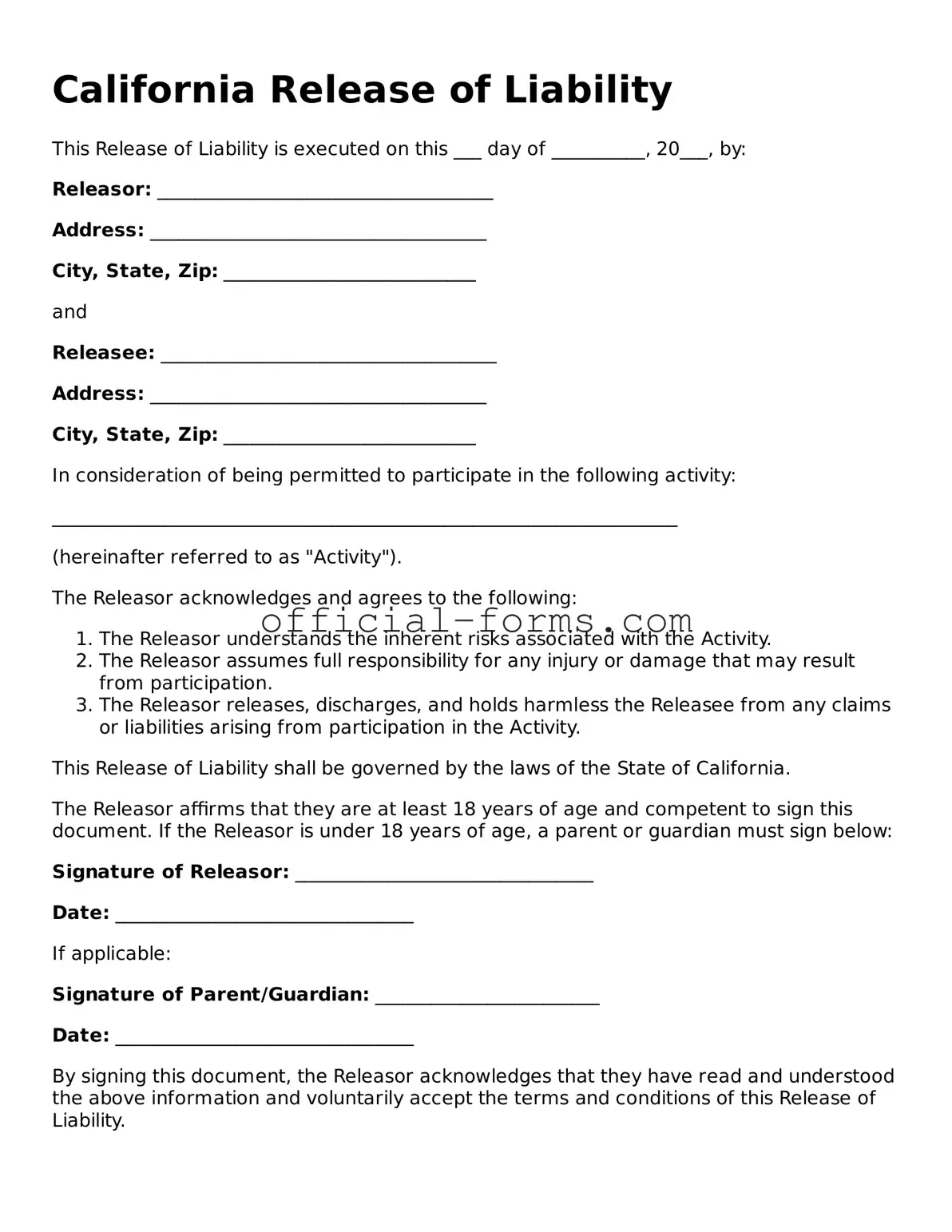Official California Release of Liability Document
The California Release of Liability form is a legal document designed to protect individuals and organizations from claims resulting from injuries or damages that may occur during specific activities. By signing this form, participants acknowledge the risks involved and agree not to hold the organizers liable for unforeseen incidents. Understanding the implications of this form is crucial for anyone engaging in activities that carry inherent risks.
Open My Release of Liability Now
